Abstract
A consistent and statistically significant association between prevalence of hepatic neoplasms in free-living sole (Parophrys vetulus) and levels of anthropogenic polycyclic aromatic hydrocarbons in bottom sediment from sites of fish capture was documented in a series of studies conducted over a period of 7 years in Puget Sound, Washington. This result strengthens the evidence supporting a causal relationship between exposure to sediment-associated hydrocarbons and development of hepatic neoplasms in this bottom-dwelling marine fish species. Prevalences of two other distinct categories of idiopathic hepatic lesions-megalocytic hepatosis and steatosis/hemosiderosis-also showed consistent, statistically significant associations with polycylic aromatic hydrocarbon concentrations in bottom sediment, and association with prevalence of a third category (putatively preneoplastic foci of cellular alteration) approached statistical significance. On the basis of other studies, megalocytic hepatosis and foci of cellular alteration are both considered to be important precursor lesions in the stepwise histogenesis of hepatic neoplasms.
Full text
PDF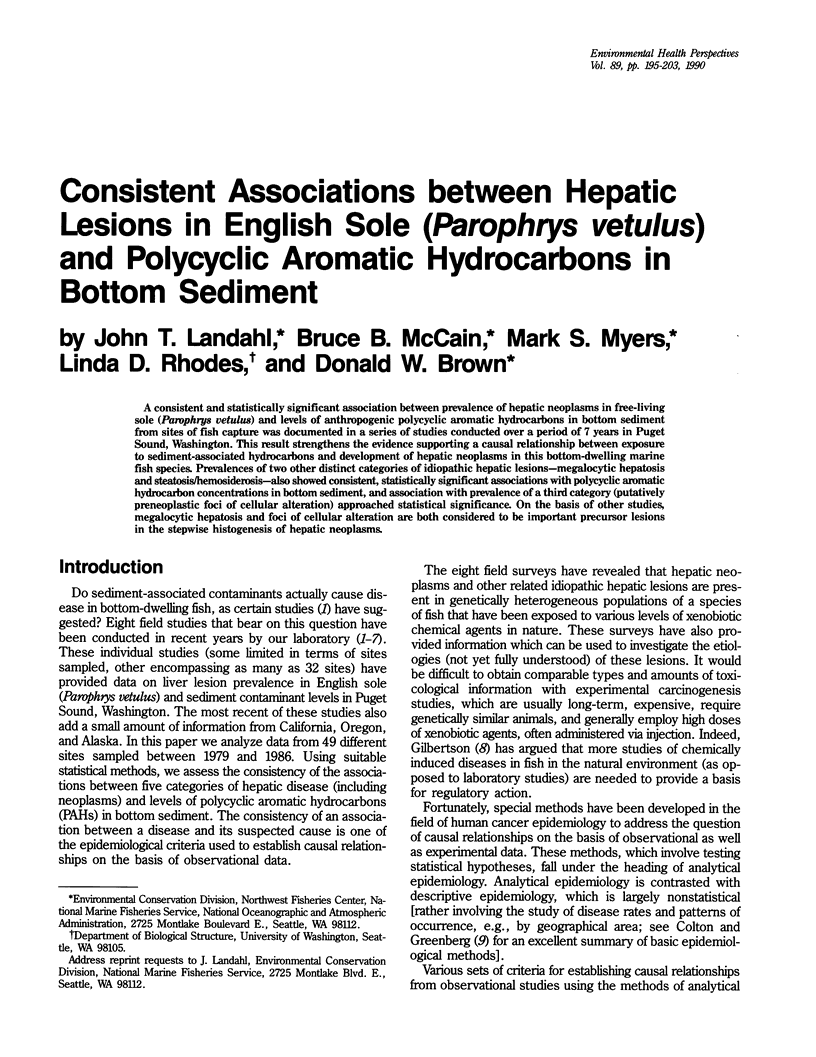
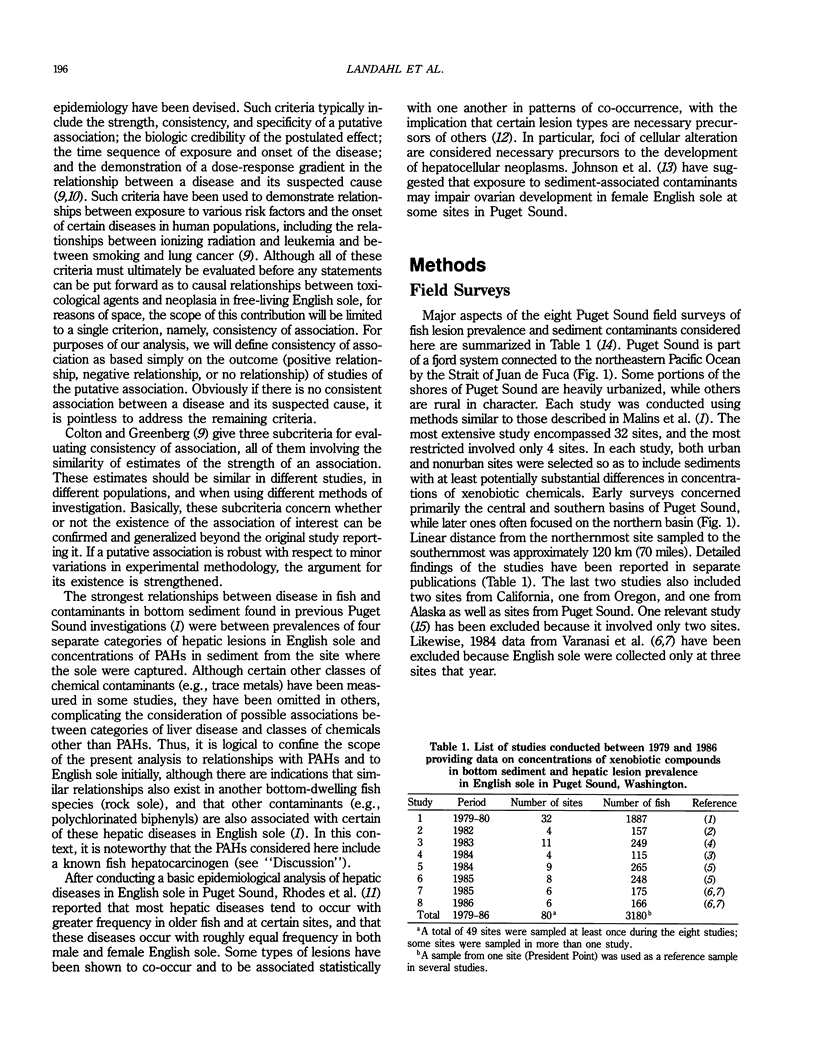
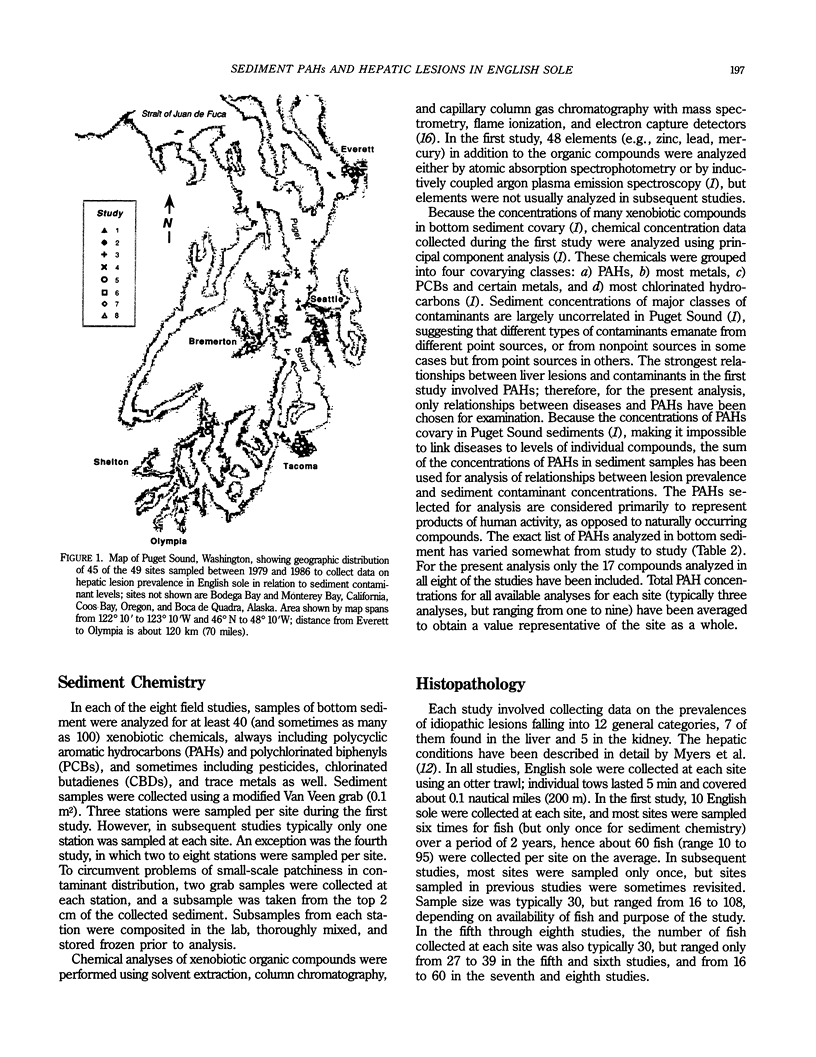
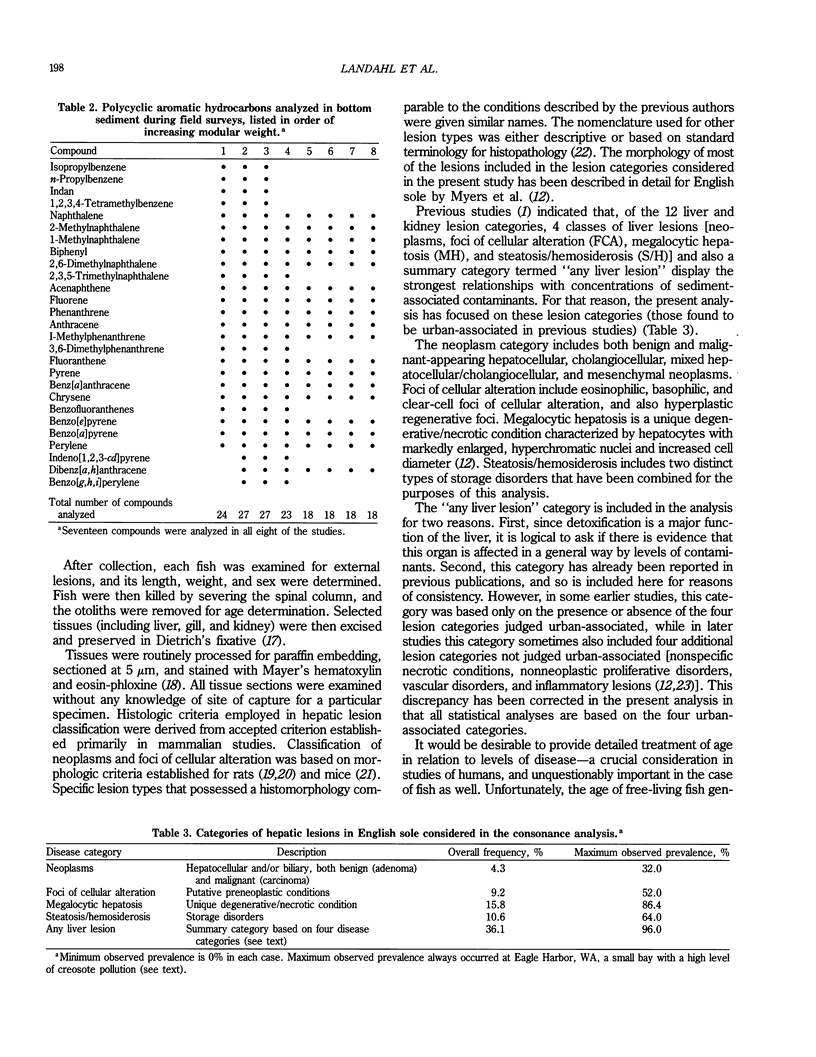
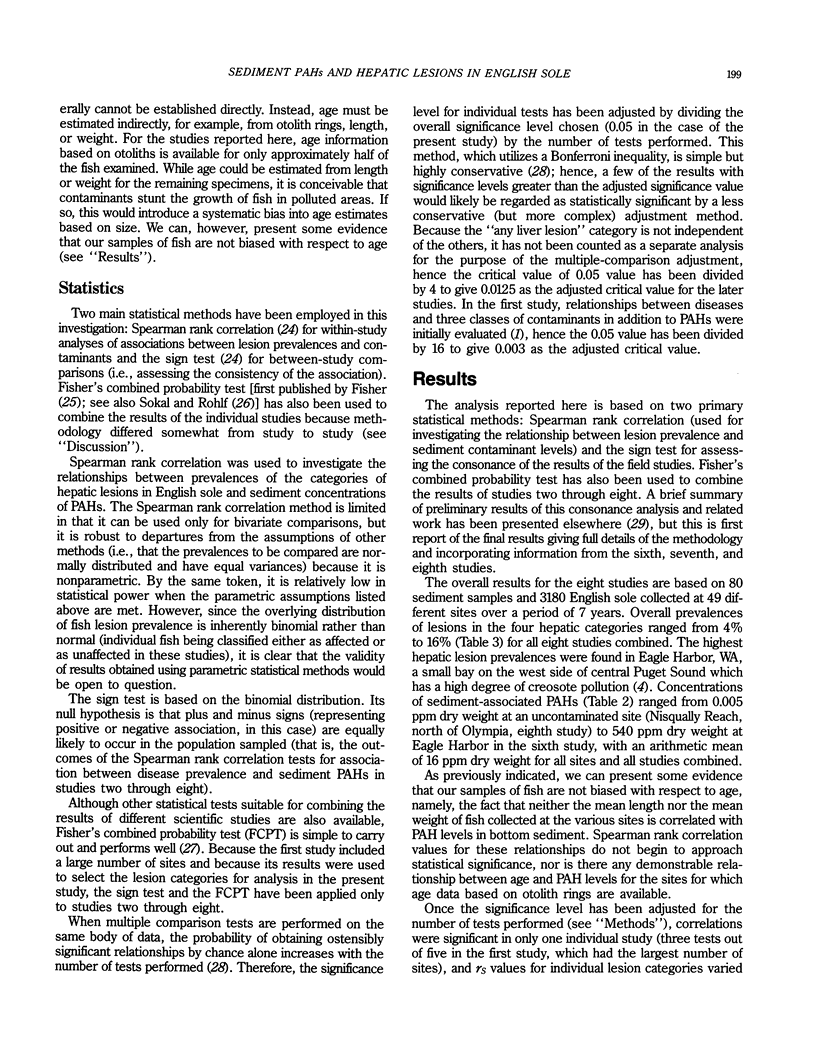
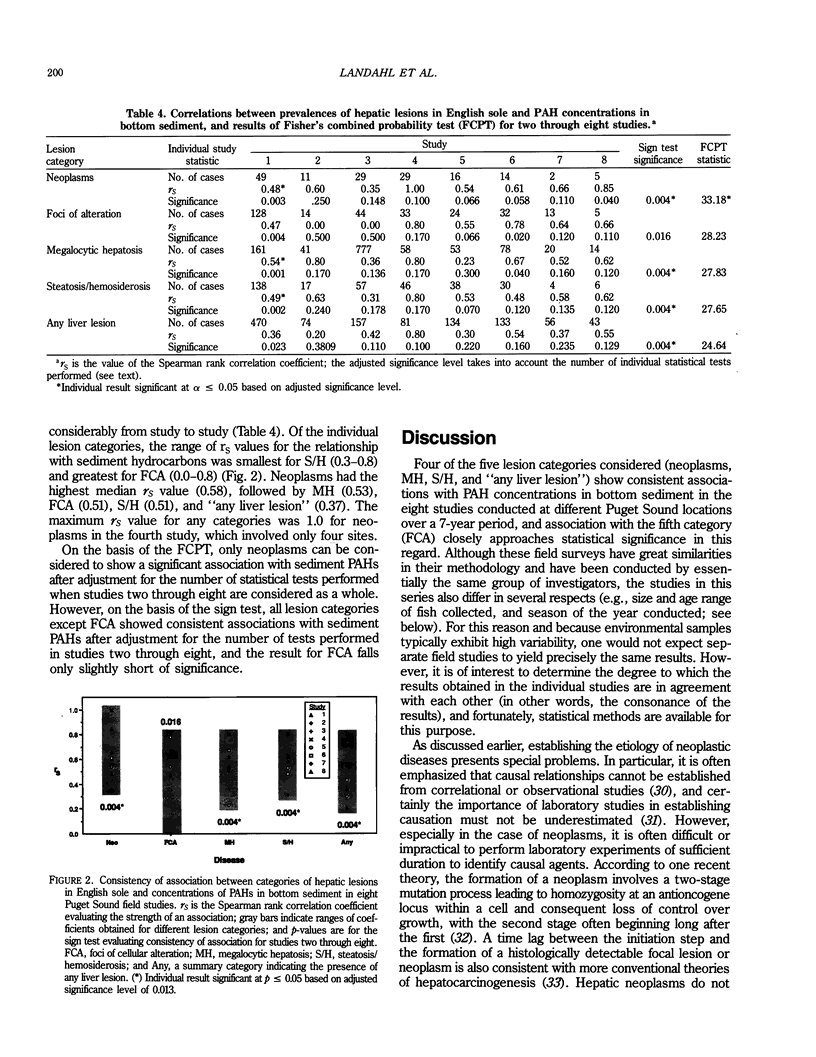
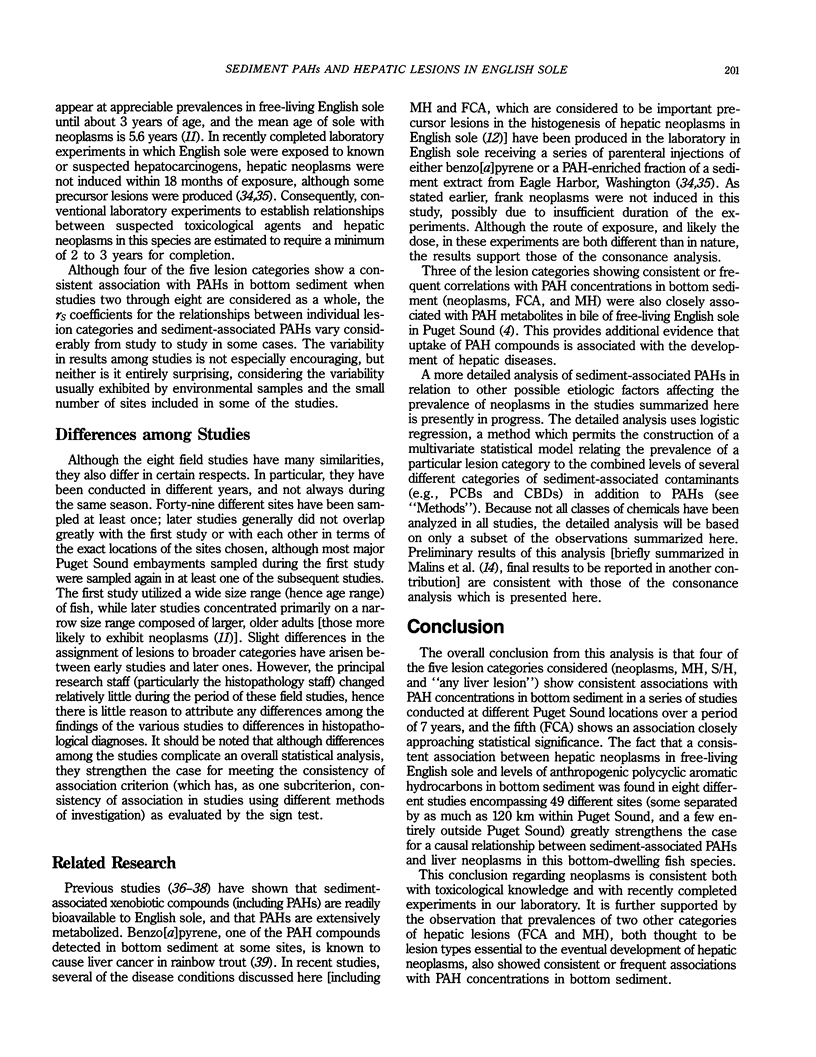


Selected References
These references are in PubMed. This may not be the complete list of references from this article.
- Farber E., Sarma D. S. Chemical carcinogenesis: the liver as a model. Pathol Immunopathol Res. 1986;5(1):1–28. doi: 10.1159/000157000. [DOI] [PubMed] [Google Scholar]
- Frith C. H., Ward J. M. A morphologic classification of proliferative and neoplastic hepatic lesions in mice. J Environ Pathol Toxicol. 1979 Dec;3(1-2):329–351. [PubMed] [Google Scholar]
- Hendricks J. D., Meyers T. R., Shelton D. W., Casteel J. L., Bailey G. S. Hepatocarcinogenicity of benzo[a]pyrene to rainbow trout by dietary exposure and intraperitoneal injection. J Natl Cancer Inst. 1985 Apr;74(4):839–851. [PubMed] [Google Scholar]
- Krahn M. M., Rhodes L. D., Myers M. S., Moore L. K., MacLeod W. D., Jr, Malins D. C. Associations between metabolites of aromatic compounds in bile and the occurrence of hepatic lesions in English sole (Parophrys vetulus) from Puget Sound, Washington. Arch Environ Contam Toxicol. 1986 Jan;15(1):61–67. doi: 10.1007/BF01055249. [DOI] [PubMed] [Google Scholar]
- Malins D. C., Krahn M. M., Brown D. W., Rhodes L. D., Myers M. S., McCain B. B., Chan S. L. Toxic chemicals in marine sediment and biota from Mukilteo, Washington: relationships with hepatic neoplasms and other hepatic lesions in English sole (Parophrys vetulus). J Natl Cancer Inst. 1985 Feb;74(2):487–494. [PubMed] [Google Scholar]
- Malins D. C., Krahn M. M., Myers M. S., Rhodes L. D., Brown D. W., Krone C. A., McCain B. B., Chan S. L. Toxic chemicals in sediments and biota from a creosote-polluted harbor: relationships with hepatic neoplasms and other hepatic lesions in English sole (Parophrys vetulus). Carcinogenesis. 1985 Oct;6(10):1463–1469. doi: 10.1093/carcin/6.10.1463. [DOI] [PubMed] [Google Scholar]
- Malins D. C., McCain B. B., Myers M. S., Brown D. W., Krahn M. M., Roubal W. T., Schiewe M. H., Landahl J. T., Chan S. L. Field and laboratory studies of the etiology of liver neoplasms in marine fish from Puget Sound. Environ Health Perspect. 1987 Apr;71:5–16. doi: 10.1289/ehp.87715. [DOI] [PMC free article] [PubMed] [Google Scholar]
- Moolgavkar S. H. Carcinogenesis modeling: from molecular biology to epidemiology. Annu Rev Public Health. 1986;7:151–169. doi: 10.1146/annurev.pu.07.050186.001055. [DOI] [PubMed] [Google Scholar]
- Myers M. S., Rhodes L. D., McCain B. B. Pathologic anatomy and patterns of occurrence of hepatic neoplasms, putative preneoplastic lesions, and other idiopathic hepatic conditions in English sole (Parophrys vetulus) from Puget Sound, Washington. J Natl Cancer Inst. 1987 Feb;78(2):333–363. [PubMed] [Google Scholar]
- Platt J. R. Strong Inference: Certain systematic methods of scientific thinking may produce much more rapid progress than others. Science. 1964 Oct 16;146(3642):347–353. doi: 10.1126/science.146.3642.347. [DOI] [PubMed] [Google Scholar]
- Squire R. A., Levitt M. H. Report of a workshop on classification of specific hepatocellular lesions in rats. Cancer Res. 1975 Nov;35(11 Pt 1):3214–3223. [PubMed] [Google Scholar]


